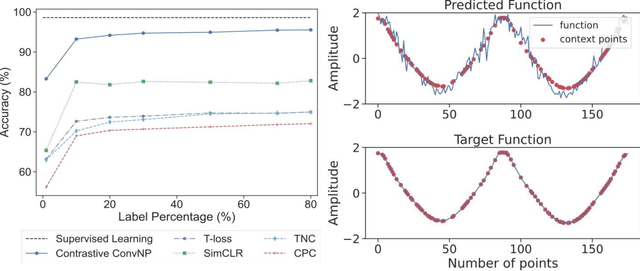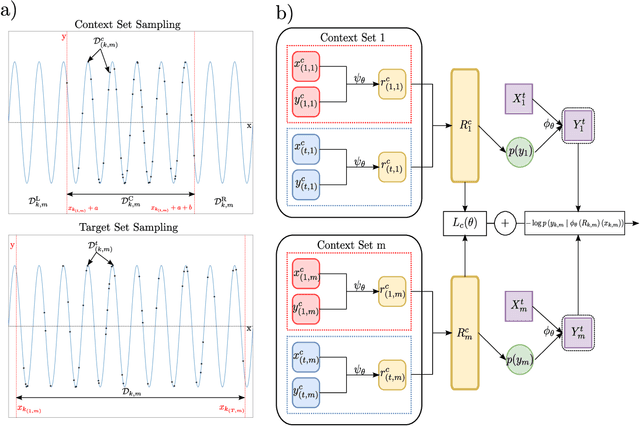Ohama Iku
Contrastive Neural Processes for Self-Supervised Learning
Oct 31, 2021



Abstract:Recent contrastive methods show significant improvement in self-supervised learning in several domains. In particular, contrastive methods are most effective where data augmentation can be easily constructed e.g. in computer vision. However, they are less successful in domains without established data transformations such as time series data. In this paper, we propose a novel self-supervised learning framework that combines contrastive learning with neural processes. It relies on recent advances in neural processes to perform time series forecasting. This allows to generate augmented versions of data by employing a set of various sampling functions and, hence, avoid manually designed augmentations. We extend conventional neural processes and propose a new contrastive loss to learn times series representations in a self-supervised setup. Therefore, unlike previous self-supervised methods, our augmentation pipeline is task-agnostic, enabling our method to perform well across various applications. In particular, a ResNet with a linear classifier trained using our approach is able to outperform state-of-the-art techniques across industrial, medical and audio datasets improving accuracy over 10% in ECG periodic data. We further demonstrate that our self-supervised representations are more efficient in the latent space, improving multiple clustering indexes and that fine-tuning our method on 10% of labels achieves results competitive to fully-supervised learning.
 Add to Chrome
Add to Chrome Add to Firefox
Add to Firefox Add to Edge
Add to Edge